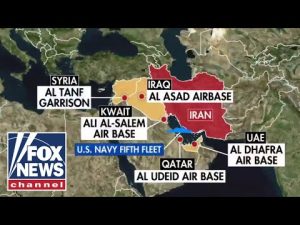In a flurry of excitement that had the whole nation on the edge of their seats, Defense Secretary Pete Hegseth stepped into the spotlight to unveil the details of the recently launched Operation Midnight Hammer. This wasn’t just any military operation; it was, by all accounts, one of the largest and most intricate missions involving the formidable B-2 bomber. If that doesn’t get your heart racing, nothing will! In the aftermath of the strikes, which took place under the cover of night, Hegseth faced a barrage of scrutiny but remained cool, calm, and collected, laying out the achievements of the operation in a news conference that caught the attention of many.
Operation Midnight Hammer came swinging when diplomacy was deemed necessary, and Hegseth noted that the United States is extending an olive branch to Iran. The reasoning was clear: the U.S. is ready for peace and is giving Iran more than a fair chance to come to the negotiating table. This wasn’t just bluster from the podium—behind the scenes, multiple channels of communication have been buzzing with messages aimed at convincing the Iranian leadership. At the same time, military aides to President Trump have praised the mission as something extraordinary, claiming they’ve just rolled out the red carpet for American military power in a manner not seen in many decades.
In the context of the operation, the targets weren’t limited to just the Fordow facility, which had been the main focus in the lead-up to the strikes. Instead, the mission aimed at taking out key nuclear sites, including those previously damaged by Israeli operations at Natanz and Isfahan. It was a coordinated effort that transcended what the world had expected from American military action. The Chairman of the Joint Chiefs of Staff suggested that this mission demonstrated a glaring weakness in Iran’s defense capabilities, likening the operation to a masterclass in aerial dynamics that left their fighters grounded and their missile systems seemingly blind to the incoming task force.
Following these successful strikes, the U.S. forces made a tactical exit from Iranian airspace without a hitch—an impressive feat considering the complexities involved. Reports confirm that not a single Iranian shot was fired in retaliation as the mission matrix returned home, effectively giving the impression that the Iranian military might not have been prepared for such an audacious operation. All indicators point to the fact that the strike package was met with more of a hush than a roar, making it clear that America’s deterrent presence is more pronounced than ever.
More than just a showcase of military might, Operation Midnight Hammer was strategically layered, with objectives that went well beyond simple retaliation. The mission aimed to reaffirm the unshakeable alliance between the U.S. and Israel while sending a strong message to any potential adversaries considering similar misadventures in the region. It served as a stark reminder of the lengths the United States is willing to go to protect its interests and allies. As the dust begins to settle and the diplomatic wheels are set in motion, the world watches anxiously to see how Iran responds to this unprecedented show of force. Will peace be on the horizon, or has America just drawn a bold line in the sand? Only time will tell, but one thing is certain: the stakes are higher than ever.







